Understanding Alcoholism
Learn about alcohol addiction & abuse
Alcohol is a central nervous system depressant that is the product of the fermentation of starches, sugars, and yeast. As the primary intoxicating ingredient in products including beer, wine, and liquor, alcohol (technically, ethyl alcohol or ethanol) is both the most commonly used and the most commonly abused drug in the United States.
Though alcohol is a depressant, it temporarily acts as a stimulant, triggering the release of the “pleasure hormone” dopamine and prompting users to experience an initial high that is marked by improved mood, loss of inhibition, and general sense of happiness. As this is occurring, though, the drug is also slowing the user’s breathing and heart rate, in addition to impairing his or her speech, thought patterns, motor skills, and coordination. Alcohol affects the cerebellum, cerebral cortex, medulla, hypothalamus, and pituitary gland.
Alcohol abuse leads to tolerance (requiring increasingly greater amounts of the drug in order to experience the high that previously resulted from smaller doses) and dependence (physical reliance upon the drug in order to forestall the onset of withdrawal symptoms).Though restricted for purchase and consumption in the United States to adults aged 21 and above, alcohol is also the most commonly abused drug among adolescents and teenagers.
Dependence upon or addiction to alcohol (commonly referred to as alcoholism) is a widespread problem that has caused significant damage to individuals, families, and communities. In part because of the nature of the drug and in part because of the social acceptance of drinking alcohol, alcoholism can be particularly difficult to overcome. However, decades of research has shown that with proper treatment of alcohol addiction, individuals who have struggled with a dependence can stop drinking and achieve long-term sobriety.
Statistics
Alcohol abuse statistics
According to the National Institute on Alcohol Abuse and Alcoholism (NIAAA), 87.6% of U.S. adults aged 18 and above have consumed alcohol at some point in their lives. 71% of surveyed adults in the over-18 demographic told researchers they had consumed alcohol in the past year, while 56% said they had had at least one drink in the previous 30 days.
NIAAA experts estimate that about 17 million American adults have an alcohol abuse problem. The U.S. Centers for Disease Control and Prevention (CDC) has reported that alcohol is responsible for about 88,000 deaths (and 2.5 million years of potential life lost) each year. On a global level, the World Health Organization (WHO) reports that alcohol is responsible for 3.3 million deaths, or 5.9% of all global deaths, every year.
Causes & Risks
Causes and risk factors for alcohol abuse
As with most cases of substance abuse and addiction, experts believe that alcohol problems may be caused by genetic influences, environmental forces, or (most likely) a combination of the two.
Genetic: Several studies strongly suggest that genetics plays a role in determining whether or not a person will have a problem with alcohol abuse. People who have a family history of alcoholism are at increased risk for having the disorder themselves; when alcoholism is present in a first-degree family member (parent or sibling), the risk is even greater. In December 2014, researchers revealed that they had discovered sets of genes that worked as networks in alcoholics, but did not function in a similar manner in people who were not dependent upon alcohol.
Environmental: Having a family history of alcohol abuse and alcoholism can be an environmental factor as well as a genetic one. Children who grow up around relatives who regularly abuse alcohol can become conditioned to believe that this is normal and acceptable behavior. Also, children of alcoholics may suffer from the effects of abuse, neglect, or stress related to their parent’s struggle with alcohol dependency. Outside the family, peer pressure, work-related stress, and trauma are three of the many environmental influences that can lead a person into alcohol abuse.
Risk Factors:
- Family history of alcohol abuse
- Family history of alcoholism
- Depression or a similar mental health disorder
- Age (people who begin drinking during adolescence are more likely to develop alcoholism)
- High amounts of stress
- Low self-esteem
- Personal history of trauma (including physical, emotional, or sexual abuse)
- Relationship problems
Signs & Symptoms
Signs and symptoms of alcohol abuse
In some situations, people who develop a problem with alcohol abuse or alcoholism exhibit obvious signs that they are impaired or struggling with chemical dependency. However, other alcoholics are able to keep their disorder secret from even their closest friends or family members. No one sign is a sure indicator that a person has developed alcoholism, but many alcoholics exhibit some, many, or all of the following symptoms:
Behavioral symptoms:
- Withdrawing from family and friends
- Using alcohol as a means of both celebrating successes and dealing with failures
- Drinking alone or in secret
- Drinking early in the morning and/or at intervals throughout the day
- Inability to stop after one or two drinks
- Giving up hobbies or other activities in order to spend more time drinking
- Becoming irritable or agitated when not able to drink
- Hiding alcohol throughout the house or in the workplace
- Continuing to drink even after experiencing negative consequences (lost job, legal problems, strained relationships, etc.) as a result of drinking alcohol
Physical symptoms:
- Developing tolerance (needing to drink more in order to get drunk)
- Shaking, sweating, or experiencing other withdrawal symptoms when not able to drink
- Gaining weight and taking on a bloated appearance
- Losing weight due to malnutrition
- Experiencing gastrointestinal distress
- Redness of the nose and cheeks
Cognitive symptoms:
- Constantly thinking about drinking
- Having trouble focusing or concentrating
- Experiencing memory loss or blackouts
Psychosocial symptoms:
- Feeling guilty after drinking to excess
- Needing alcohol to enjoy oneself
- Pressuring others to drink (or drink more) when they’re in your presence
Effects
Effects of alcohol abuse
Alcoholism can have a negative impact on virtually all areas of a person’s life, including one’s physical, mental, emotional, social, and financial health. The following are among the many ways that alcoholism can impact a person’s body, mind, personal life, and career:
- Liver damage (including cirrhosis of the liver)
- Tremors
- Jaundice
- Rhinophymia (reddened and bulbous “drinker’s nose”)
- Chronic diarrhea
- Gastrointestinal bleeding
- Certain cancers (including mouth, throat, esophagus, breast, colon, and liver)
- Pancreatitis
- Injuries to do alcohol-related accidents
- Sexually transmitted infections
- Anemia
- Malnutrition
- Blackouts
- Strained or failed relationships
- Job loss
- Legal problems
Co-Occurring Disorders
Alcohol abuse & co-occurring disorders
Alcoholism rarely occurs in a vacuum. The following are among the several co-occurring disorders that may have contributed to or been exacerbated by a person’s alcohol abuse:
- Depressive disorders
- Bipolar disorder
- Schizophrenia
- Panic disorder
- Anxiety disorders
- Posttraumatic stress disorder (PTSD)
- Attention-deficit/hyperactivity disorder (ADHD)
- Antisocial personality disorder
- Chronic pain






